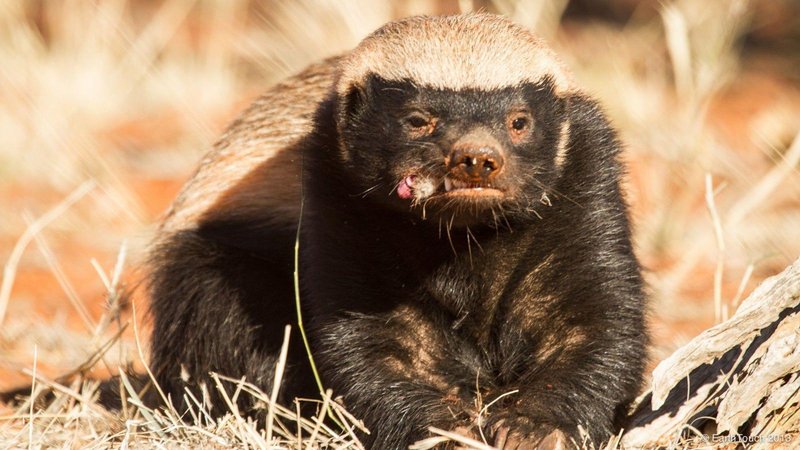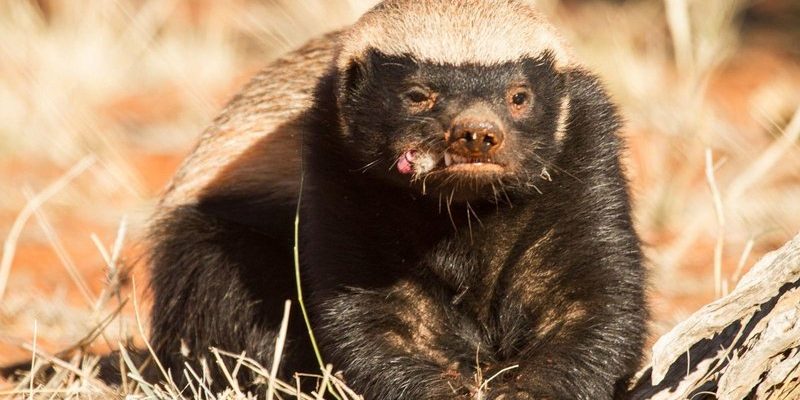
Let’s dive into the exciting world of the honey badger and uncover what makes these animals so special. From their hunting habits to their roles as scavengers, honey badgers have a unique position in their habitats. Just as a chess player considers every piece on the board, every creature in an ecosystem has a role to play, and the honey badger is no exception.
1. A Fearless Predator
Honey badgers are not your average meat-eaters. These small mammals are incredibly versatile hunters, always on the lookout for their next meal. They primarily feast on small mammals, birds, and even snakes. But here’s the kicker—honey badgers are known for taking on some of the most dangerous creatures in their habitats, like venomous snakes, without a second thought.
These courageous little beasts are equipped with thick skin and sharp claws, which they cleverly use to dig into burrows and crack open hard-shelled prey. By hunting various animals, honey badgers help control populations in their ecosystem. Imagine a garden: if one type of weed takes over, it can choke out other plants. Honey badgers ensure that no single species dominates the food chain.
2. The Role of Scavenger
In addition to being fierce hunters, honey badgers are also excellent scavengers. When they come across a carcass, you can bet they won’t pass it up! They play a vital role in cleaning up their environment by consuming dead animals, which helps reduce the spread of disease.
By eating carrion, honey badgers help recycle nutrients back into the soil. Think of it like composting in your backyard. Just as organic waste turns into nutrient-rich soil for your plants, these scavengers contribute to the health of their ecosystem. This makes them not only helpful but also essential for maintaining balance in their habitats.
3. The Impact on Soil and Plant Life
The activities of honey badgers extend beyond just their immediate hunting and scavenging. By digging and foraging, they disturb the soil, which can encourage new plant growth. When they hunt for food or create burrows, they aerate the ground, allowing air and water to penetrate deeper into the soil.
This means that honey badgers unintentionally promote biodiversity in their habitats. Imagine if a gardener broke up compacted soil; the plants would thrive! Honey badgers do their part by naturally preparing the ground for other species to flourish.
4. Interactions with Other Species
So, how do honey badgers fit into the broader picture of their ecosystem? Their fearless attitude can sometimes put them in conflict with larger predators like lions and hyenas. Surprisingly, honey badgers often scare these big animals away from their food.
But it’s not just larger animals that they interact with; they also coexist with a myriad of smaller critters. For instance, they can influence the habits of birds and other scavengers. When a honey badger uncovers a meal, other animals might gather to take advantage of the leftovers. In this way, they can help create a dynamic food web in their ecosystem.
5. Resilience and Adaptation
One of the most incredible things about honey badgers is their ability to adapt to different environments. From deserts to forests, they are found in various habitats across Africa and parts of Asia. Their adaptability is a testament to how they fit into ecosystems that constantly change around them.
Letting their curiosity lead the way, honey badgers are known for trying out new foods. This flexibility helps them thrive in challenging conditions, making them a resilient species. They teach us an important lesson: adaptability can be the key to surviving and succeeding, no matter where you are.
6. Threats to Their Survival
Despite their fierce reputation, honey badgers face several threats in the wild. Habitat destruction, hunting, and climate change are just a few challenges they encounter daily. As human activity encroaches on their territories, their populations have started to dwindle in some areas.
Preserving honey badgers and their natural habitats is essential not just for their survival but for the health of entire ecosystems. If these little warriors vanish, it could throw the balance off, affecting many other creatures. Remember, every player on the board counts!
7. Conclusion: The Importance of Honey Badgers
So, the next time someone mentions honey badgers, don’t just picture a tough little creature foraging through the wild; think about all they do for their ecosystem. From controlling prey populations to recycling nutrients and promoting plant growth, honey badgers are unsung heroes of their habitats.
Their roles as both predators and scavengers make them vital in maintaining biodiversity and balance. Understanding their contributions helps us appreciate the intricate connections within nature. In a world where every creature has a purpose, the honey badger stands out as a tough but crucial player in the game of life. By protecting these animals, we’re also safeguarding the health of their ecosystems—a win-win for all.

